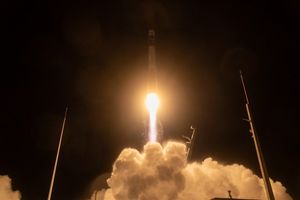
Electric vehicles (EV) now account for approximately 10% of new cars sold in the US, with some analysts estimating that this percentage may expand to a full third by 2027.
As more Americans drive EVs, and ride share companies increase the size of their EV fleets, access to charging stations has become a politically charged topic.
Republican presidential candidate Donald Trump has repeatedly bashed EV, and identifies charging time as a key problem for the vehicles.
“Who wants to drive an electric car for the rest of your life? Does anybody? You don’t want to drive for 45 minutes and then stop for three hours, is that what you want?” Trump said at a speech in Florida in July.
As the presidential race heated up, Trump’s campaign began to attack federal funding for charging stations.
Access to charging remains an Achilles heel for EVs. University of California, Davis researcher Alan Jenn published a new study in October on infrastructure for ridesharing companies Uber UBER and Lyft LYFT . One key finding was that: “The necessary ratio of chargers is approximately 10 times higher for EVs in Uber and Lyft compared to chargers for the general EV owning public” in California.
Jenn argues in a recent article that successful charging, rather than driving range, has become the largest issue facing EV drivers in the U.S. According to his analysis, a significant percentage of charging units in California are non-working at any given point. Perhapsmore significantly, those that do work often do not provide complete charges.
In total, Jenn estimates that a full 30% of EV charges attempted in California fail.
While Jenn sees the decision by Tesla TSLA to open its supercharger network to non-Tesla vehicles as a positive development as it expands access to fast chargers, he notes that this shift is proceeding slowly.
More stories we’re tracking at Equities:
Milton cost may land on low end of projected range
Hurricane Milton made landfall as a Category 3 storm, with the Tampa Bay region and Sarasota County feeling the brunt of the impact. Millions were evacuated, while large regions remain without power and several deaths are reported.
In advance of the hurricane’s arrival, the National Weather Service issued the greatest number of tornado warnings for Florida ever. Although the damage was massive — particularly to densely populated low-lying neighborhoods that have experienced a building surge in recent years, initial reports suggest that damage remained within projected ranges. Bloomberg cited reports that total damages might be between $60 and $75 billion
In a note to investors, UBS — working with limited initial information, estimated that the total cost of the storm to insurers may be as low as $50 billion.
New AI clean energy project for the Lone Star State
Texas data center operator Project Rosa announced an initial deal with renewable power provider Soluna Holdings SLNH for the creation of a new 60 Acre facility. The project will be in addition to the planned 240MW wind farm already announced.
ESG data provider to partner with FTSE Russell on quantum cloud project
ESG data company Measurabl has announced a new partnership to make FTSE Russell green real estate data easier to access. The new venture will be powered by Measurabl’s Quantum Cloud ESG data repository. Currently, FTSE’s Green Index Series tracks over $9 billion in assets.
Read more: GOP summit focuses on climate solutions even as party leaders deny climate change


















